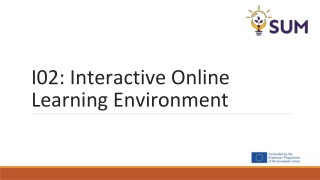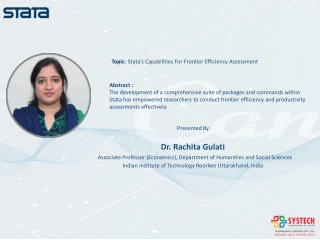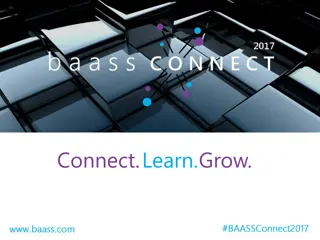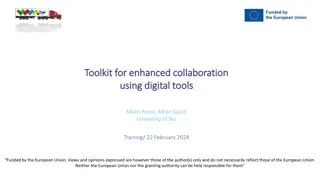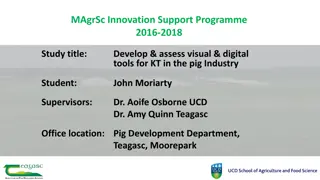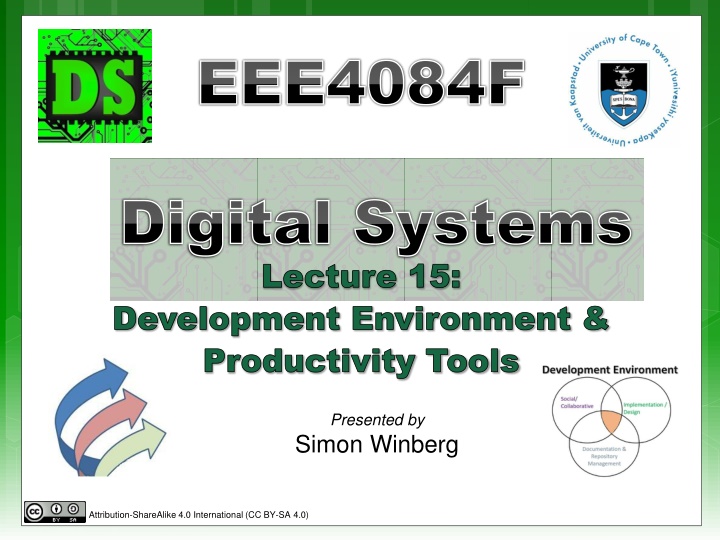
Digital Systems Lecture 15: Development Environment & Productivity Tools Overview
The development environment is crucial for efficient and secure work in computer system development. It includes a variety of software and hardware tools and equipment aimed at facilitating development practices. Productivity tools such as planning tools, online collaboration tools, version control software, and backup tools play a key role in ensuring smooth project implementation. It is essential to maintain a well-structured work environment to prevent disorganization, loss of data, and other inefficiencies that can hinder project progress.
Download Presentation

Please find below an Image/Link to download the presentation.
The content on the website is provided AS IS for your information and personal use only. It may not be sold, licensed, or shared on other websites without obtaining consent from the author. If you encounter any issues during the download, it is possible that the publisher has removed the file from their server.
You are allowed to download the files provided on this website for personal or commercial use, subject to the condition that they are used lawfully. All files are the property of their respective owners.
The content on the website is provided AS IS for your information and personal use only. It may not be sold, licensed, or shared on other websites without obtaining consent from the author.
E N D
Presentation Transcript
EEE4084F EEE4084F Digital Systems Digital Systems Lecture 15: Development Environment & Productivity Tools Presented by Simon Winberg C:\Users\swinberg\Documents\ACTIVE\EEE4084F\Common\Images_open\CC-SA.png Attribution-ShareAlike 4.0 International (CC BY-SA 4.0)
Lecture Overview Development Environment What are productivity tools? Some productivity tools I use
Development Environment The development environment is where the development happens It comprises the software and hardware tools and equipment that are used to construct the desired system Nowadays an effective selection of productivity tools is an essential ingredient for efficient and secure work The physical side of my development environment may look messy but with SVN my software is safe.
Development Environment Social/ Collaborative Implementation / Design Documentation & Repository Management You development environment should combines (and be planned around) all these areas
Productivity Tools Productivity tools (in terms of computer system development) are planned around facilitating and integrating development practices. These include Planning Tools Online Collaboration tools Version Control Software Repository Managers Synchronization tools Backup tools* * You might think backup is redundant with synchronization, but this is not really the case especially for high-stakes projects
Working Efficiently Complex projects have lots of things going on, and becomes more challenging with bigger teams. In these cases it is easy For workspaces to become disorganized To loose things For file and folders to become haphazard To overwrite code To confuse versions or pieces of different versions To waste time find/recover things you did already Thus, it is essential to have a well-structured and effective work environment from the start This can be eliminated, or significantly reduce, the problems above, ensuring projects can better achieve their objectives.
Why? Why am I boring you with these things? You re not going to work on big projects yet are you? Actually we are leading in to the YODA project soon. It attempts to simulate aspects of an industry project. As one of the aspects is to gain experience in setting up a development environment for effective team work.
Some productivity tools I use Code sharing & version control Requirements & design docs, parts lists, etc. Generally not code sharing. Tracking Design docs Concept sketches, GUI displays Slack #Threads VoiP Call Search Saving internet (i.e. synch files on campus) Backups (could auto schedule local backups)
Slack is mainly useful for sharing info among team members in a largely chat or email forum way. Images or code snippets and other files can be added at well. Slack as multiple discussion/information threads where members basically dump useful information or answer questions.
This screenshot is an example from a fairly small project in which slack was used to form a team of students who were working on separate but related projects. They could quickly post interesting points or requirement needs, it was easier to keep track of the messages and data than e.g. just using emails.
Slack allows you to form a toolkit, essentially a list of online tools that the team is using. These tools can work somewhat together, e.g. sharing one google drive with the whole team, with draw.io accessing one of the subfolders. Slack also allows for VoIP calls, but doesn t unfortunately allow for recording of the calls (which would be very useful). However you can use a screen recorded for this purpose and then share the recording.
I hardly need to mention this one. While Drive can technically keep track of prior versions and allow deleted files to be recovered, it does not really provide the level of code handing and techiques for dealing with the programming language files as Git allows. It is extremely useful especially in constructing requirements and (draft) documents. Usually you d probably want to write the final report or user manual for the system in Latex or Word. * * The main reason being that Drive tends not to manage so well with sophisticated layouts and images as Latex or Word allows.
Rplan is essentially a nice user-friendly online Gantt chart planning application. Basically all you planning can be done through the Gantt chart. You can add team members, allocate their responsibilities, etc. Rplan integrates with Slack (all members of the slack team can log into the same Rplan project).
GitLab (in my view) is a more desirable Git facility. But lets see what the difference is between GitLab and the better known GitHub I tend to use Subversion (SVN) more commonly for smaller projects or projects you don t necessarily want to share with more than a small number of people.
GitHub vs. GitLab Git aims to manage a software dev. project and its files as these changing over time It comprises commit objects (e.g. code file) and references to commit objects GitLab and GitHub are both web-based Git repositories.
Git Inventor Who invented Git?! Any guesses? It was Linus Torvalds !! He also invented Linux as you should know
GitHub vs. GitLab GitHub Since 2008 (by the GitHub founders: Tom Preston-Werner, Chris Wanstrath, and PJ Hyett) ~ 25 million users, 67 million repositories Free for public repositories only Permissions by user Contiguous integration has to be added separately GitLab Since 2011 (by founders: Dmitriy Zaporozhets and Valery Sizov) Unlimited public and private repositories!! Permission by user & by role Operations Dashboard Continuous integration included basically tells rest of team a new push has occurred and would they like to update the code Both: Issue trackers Import and export features
SysML SysML = System Modeling Language A modelling language that is possibly better suited to HPEC and digital accelerator design than standard UML SysML main difference to UML More about modelling blocks/parts instead of modelling classes Has 9 instead of 13 diagrams in UML2 SysML involves
SySML It is both a subset and extension of UML Essentially both a visual language and a machine interoperable language (i.e. representation in XML) allowing for model checking etc. of the language.
SysML Adds derive, satisfy, verify, refine. (also allows for visual desciption of req s.) Composed of related constraint blocks that define generic or basic mathematical formulas on how items are related. E.g. how volume of a box relates to its weight. You basically need to have a reasonable understanding of UML before starting with SysML
Class Activity Discuss briefly with classmates in terms of any productivity tools you are particularly fond of and what uses they are. Welcome to share these with the lecture and the rest of the class Suggest starting thinking what will be in the arsenal of tools for your Development Environment
Some other useful methods and tools Google Test C++ code testing framework https://github.com/google/googletest/blob/mast er/googletest/docs/Primer.md BOUML Draw UML diagrams, allows code generation Agile methodology with Sprints - focused work and Scrums - stand-up short to review progress and further plans (usually at a whiteboard)
Productive team work Ready for Action
Intermission Your Next Mission: Prepare for briefing on Project YODA Calm Ambient Mix by Syneptic Share Alike instrumental https://www.youtube.com/watch?v=V48rVjh2ADA
End of lecture Ready for YODO project

